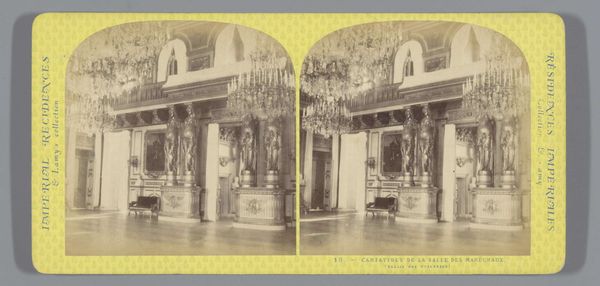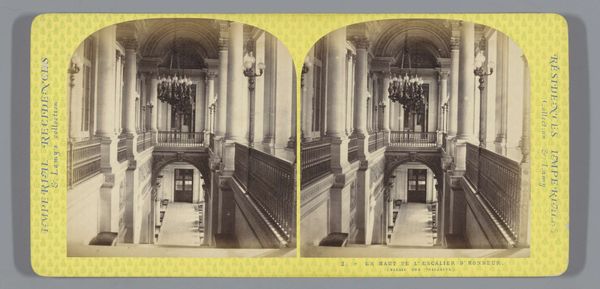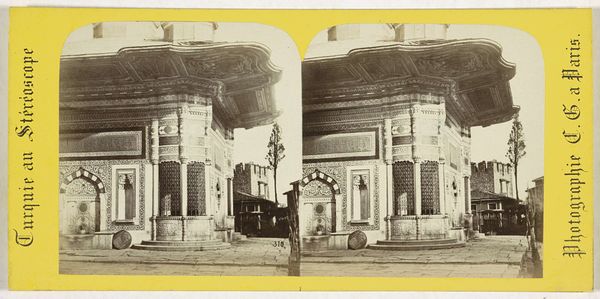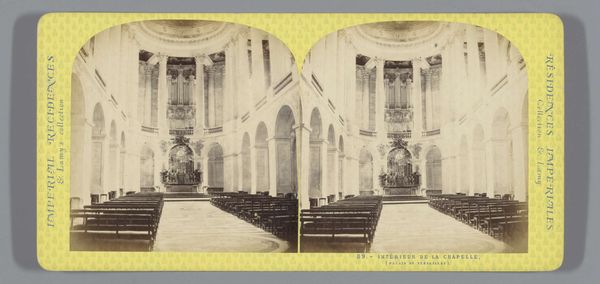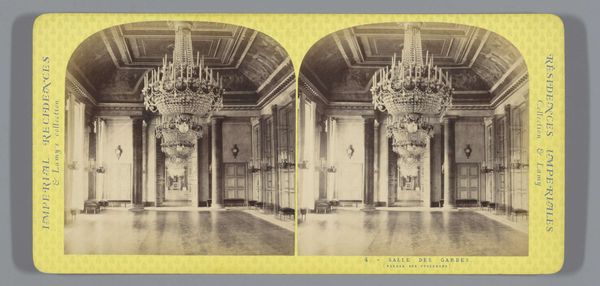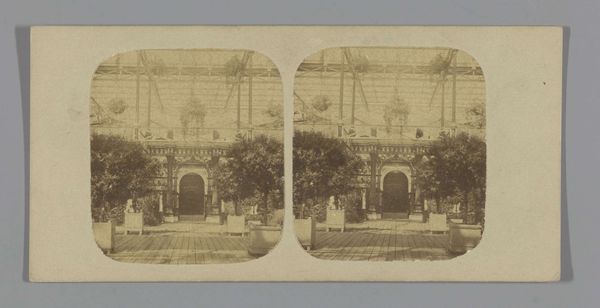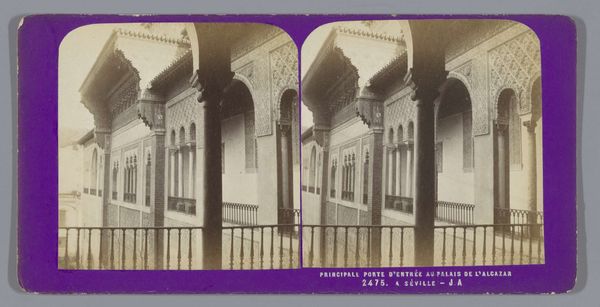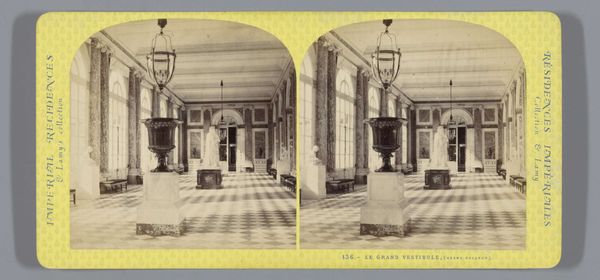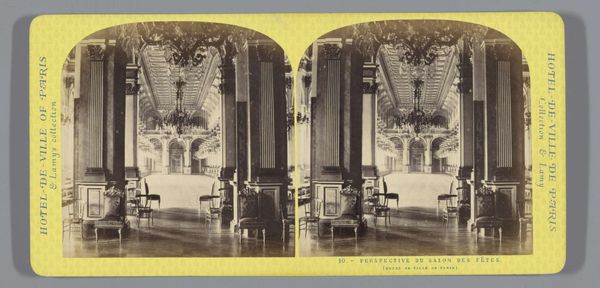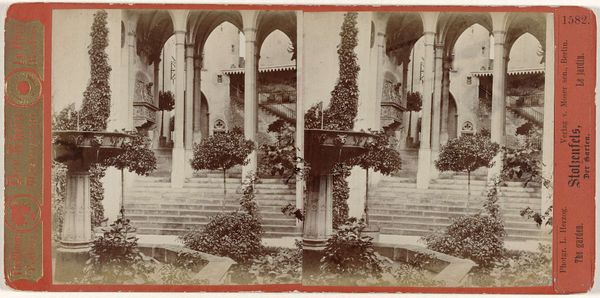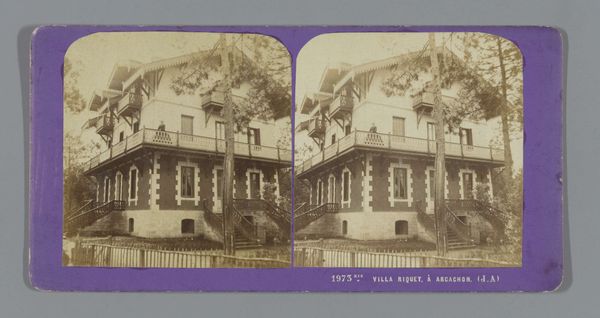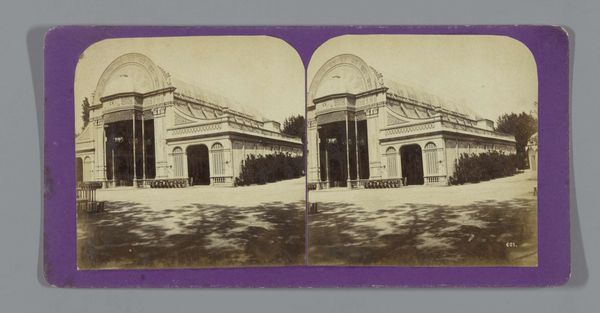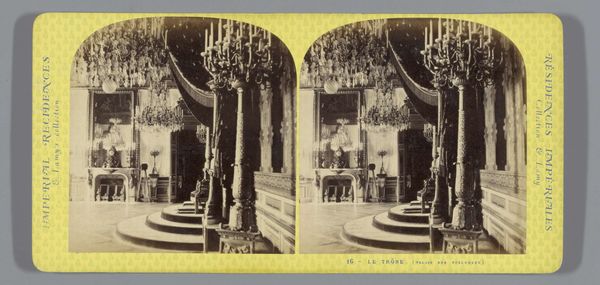
print, photography, architecture
# print
#
landscape
#
photography
#
architecture
#
realism
Dimensions: height 85 mm, width 170 mm
Copyright: Rijks Museum: Open Domain
Curator: This is a stereo photograph, "Trappenhuis van het Palais des Tuileries te Parijs" -- Staircase of the Tuileries Palace in Paris – created before 1871, by Ernest Eléonor Pierre Lamy. I am struck by the symmetry! Two virtually identical images side-by-side invite the eye to find the vanishing point and perhaps even fall into the scene itself. It’s oddly theatrical and intimate at the same time, like a private stage setting. What stands out for you? Editor: All that opulent ironwork above—I see the delicate filigree that frames such solid stone. A rigid and extravagant lattice seems meant for ornament and spectacle, almost completely obscuring its intended function. A building so obsessed with details and with surfaces says to me something about the labor and access to material embedded in the ruling-class gaze, and who isn’t allowed into the picture. Curator: Absolutely. It reminds us that beyond the artistic value, there are layers of history ingrained here, a story etched in the very materials that were soon destroyed when the Tuileries Palace burned down during the Paris Commune. Do you get a sense of impending doom looking at it? Because I kind of do. Editor: In a way. There’s certainly a weightiness. These halls speak of ambition, power, and their potential transience. But I wonder about those laborers. What iron forge birthed that chandelier, which quarry yielded that marble? Curator: I see what you're saying. Perhaps this photo, inadvertently, acts as a historical artifact not just of a palace, but also of an industry. Lamy captures a particular moment of architectural hubris right before a turning point. This convergence makes me wonder what future historians might deduce from images created today. Editor: It’s like viewing a relic encased in the amber of time – frozen moments rife with implication. Curator: Exactly! Now it's preserved only as this fleeting impression of grandiose artifice and soon-to-be vanished materiality. Editor: That paradox certainly gives the work a unique and haunting edge.
Comments
No comments
Be the first to comment and join the conversation on the ultimate creative platform.
